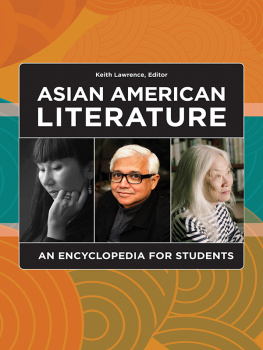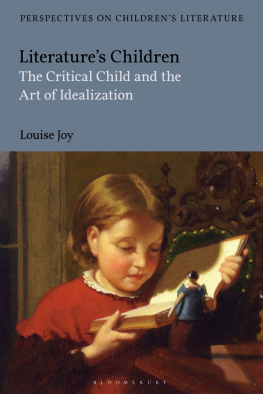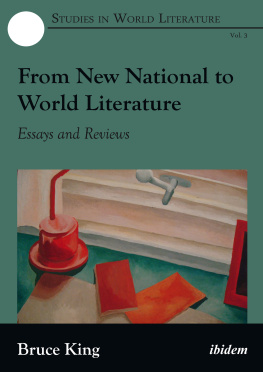First Published in 2001
by Curzon Press
Reprinted 2004
by RoutledgeCurzon
11 New Fetter Lane, London, EC4P 4EE
Transferred to Digital Printing 2004
RoutledgeCurzon is an imprint of the Taylor & Francis Group
2001 V. I. Braginsky
All rights reserved. No part of this book may be reprinted or reproduced or utilised in any form or by any electronic, mechanical, or other means, now known or hereafter invented, including photocopying and recording, or in any information storage or retrieval system, without permission in writing from the publishers
British Library Cataloguing in Publication Data
A catalogue record of this book is available from the British Library
Library of Congress Cataloguing in Publication Data
A catalogue record for this book has been requested
ISBN 0-7007-1240-2
The role played by comparative literature, either explicitly or implicitly, in the researches of the student of traditional Asian letters, depends in no small degree on which literature is the object of his examination. The Sinologist and the Sanskritist, for instance, are in the position of almost never leaving the fields of their respective literatures, thus only in exceptional cases violating the boundaries of their professional competence and avoiding the dangers entailed in any comparison, which frequently obliges the student to address someone elses, i.e., secondhand, material. Such a position is fortunate indeed, since normally nobody, except the student himself, can let him down. However fortunate, this position can also lead to losses, since it is precisely comparison that even if ne pas raison allows the student to view the examined phenomenon in a new light, in an unusual perspective and unexpected connections, or even to notice it for the first time altogether.
Totally different is the position of researchers who study, for instance, the literatures of South East Asia that cross-roads of civilisations or Asia in miniature among whom the present author counts himself. If we turn, to take one example, to Malay literature one of the richest in the region we can easily observe that its creators managed, without losing its original basis, to absorb, creatively transform, and synthesise the experience of Indian and Javanese, of Persian and Arabic writings. They fused motifs from great Indian epics with those of narratives about Muslim warriors and saints, elements of Sanskrit imagery with the erotic and vinous symbols of Middle Eastern Sufi-poets. At the stage when modern Malay-Indonesian literature was being formed, an important role was played by Malay-Chinese literary ties, while in the 20th century its deep renewal has been stimulated by the impact of Western writings. Thus the very object of study of the South East Asianist, including the specialist in Malay letters, demands that he turn to the problems and methods of comparative research, constantly switching to the level of comparative literature from that of national literature. Unless he is aware, albeit through secondary sources and translations, of the major genres and works of Sanskrit, Arabic, and Persian literatures, as well as of other literatures of South East Asia, he simply cannot do his job.
All the above factors determine the high degree to which the student of South East Asian literatures is dependent on the works of his colleagues, the specialists in other Asian letters. However, it is perhaps this dependence which develops a certain skill in the cautious and duly generalised use of descriptions of literatures, and of translations produced by the specialists that makes the South East Asianist a natural proponent of the comparative approach to Asian literatures, traditional literatures in our case.
Although the subject considered in this book is much broader than the usual field of the authors interests, the latter have left an unmistakable imprint on the book. This is hardly surprising, since the core of the present study emerged out of the numerous notes of a comparative nature, that were gradually amassed when the author was working on a history of traditional Malay literature, which he attempted to describe in terms of the literary self-awareness of its creators and their audiences (see Braginsky 1983, 1998). As this book was taking shape, some sections of it saw the light of day in various forms (see Braginsky 1991, 1993d, 1996, 1997). However, for the present volume, most of those tentative publications have been re-cast, if not re-written, considerably extended and supplemented with fresh data (including bibliographical), and entire new sections (Introduction, ). Besides that, the book as a whole has acquired a final structure, consisting of essays and illustrations. Those chapters of the book that are broader in their comparative scope are called essays, so as to emphasize their introductory nature, since they are still far from comprehensive. As for those entitled illustrations, they are intended to clarify the general ideas advanced in the essays by means of more detailed analyses of South East Asian materials, which are better known to the author.
Since this book is intended for a relatively broad circle of readers engaged in various branches of literary scholarship, I have tried to simplify the transcription of foreign names, book titles and terms as far as possible. For this reason, in the body of the book, all diacritics for both long vowels and consonants in Sanskrit and Arabic words have been omitted and sh stands in Sanskrit words for both and . Specialists will easily identify the words in question, which will be well-known to them, even in such a simplified transcription (moreover the proper transcription in brackets follows the simplified one in the Index), while this simplification will somewhat facilitate the reading of the book for the non-specialists. Throughout the book, double quotes () have been employed only for translations of the original titles of books and for quotations; in all other cases the reader will find single quotes ().
During the decade and more that has passed since the beginning of this study, the author has repeatedly resorted to the disinterested help of many scholars who have generously shared their knowledge with him. Now, it is his pleasant duty to express his sincere gratitude to them: to the Arabist Prof. D.V. Frolov (Moscow State University) and the Iranologists Prof. N.I. Prigarina (Institute of Oriental Studies, Moscow) and Dr. N.Yu. Chalisova (Russian University for the Humanities, Moscow), who provided the author with a number of translations from Arabic and Persian, which with their kind permission are included in the book; to the Sanskritist Dr. Yu.M. Alikhanova (Moscow State University), the Arabist Prof. A.B. Kudelin (Institute of World Literature, Moscow) and the Sinologist Prof. I.S. Lisevich, with whom this work was discussed at different stages of its completion. Recently the author has received no less generous support from the colleagues at the School of Oriental and African Studies, University of London: the Indologists Prof. Christopher Shackle and Dr. Javed Majeed, to whom he is also most thankful. While these scholars have greatly contributed to the improvement of the book, they are of course by no means responsible for its faults.







